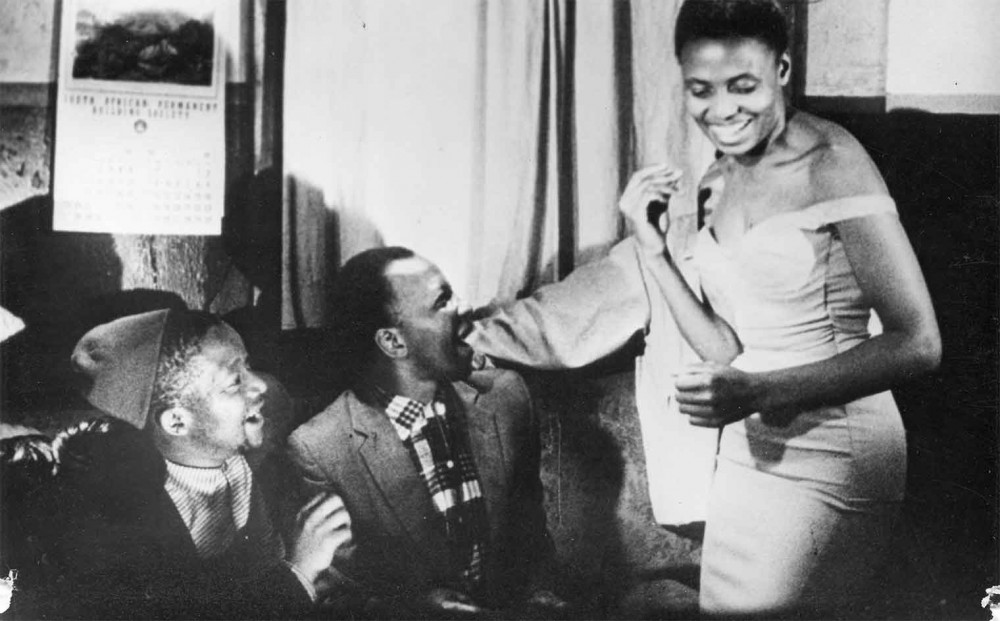COME BACK, AFRICA
2:00
Monday, February 5
Directed by Lionel Rogosin
(1959) Time capsule of Johannesburg, 1959: crowds hurrying down urban streets, pouring out of commuter trains arriving simultaneously at the same station, lining up for The Prisoner of Zenda at the Metro; while pint-sized penny whistle virtuosos attract a mixed-race downtown crowd and a chanting Methodist procession and a bride under a white parasol parade down the dusty streets of Soweto. And from out of the crowd Zacharia Mgabi, straight from Zululand in desperate search for a job, moves from the gold mines — where a gang boss turns a shovel technique exercise into a line stomp — to mushroom soup problems as a houseboy, joy-riding problems as a car washer, nutso customer problems as a waiter, to day-laboring on the roads, while sitting in at a late-night bull session, where the then-unknown Miriam Makeba drops in for two songs. Rogosin’s second feature following On the Bowery, Africa was shot with an all non-professional cast in a South Africa still under apartheid — right under the noses of the authorities, who thought he was shooting a musical film about “happy natives.” When he couldn’t find a theater or distributor for its U.S. opening, Rogosin opened the Bleeker Street Cinema and premiered it there himself, resulting in TIME proclaiming Africa as one of the year’s 10 Best. DCP. Approx. 95 min.
Reviews
“A work of amazing grace—and a forgotten treasure.”
– Sam Adams, Time Out
“A vital culture on the brink, at the moment when it was calcifying into the form it would hold for more than three decades to come. Rogosin’s films are to be treasured for imprinting vanished worlds in celluloid.”
– Nick Pinkerton, The Village Voice
“A HEROIC FILM! A film of terrible beauty, of the ongoing life it capture and of the spirit embodied by Rogosin and his fellow artists… Like On the Bowery, Come Back, Africa was meant to look directly at life lived under intolerable conditions, but it is also a precious record of a time gone by — in fact, the area where Rogosin filmed was in the process of being leveled. The musical culture of the townships at this time was completely new to most of us around the world — the Kwela, or penny whistle, street musicians; the gumboot dancing; and most of all the electrifying appearance of Miriam Makeba singing ‘Into Yam.’... This picture opened the eyes of many people to Apartheid — myself included.”
– Martin Scorsese

